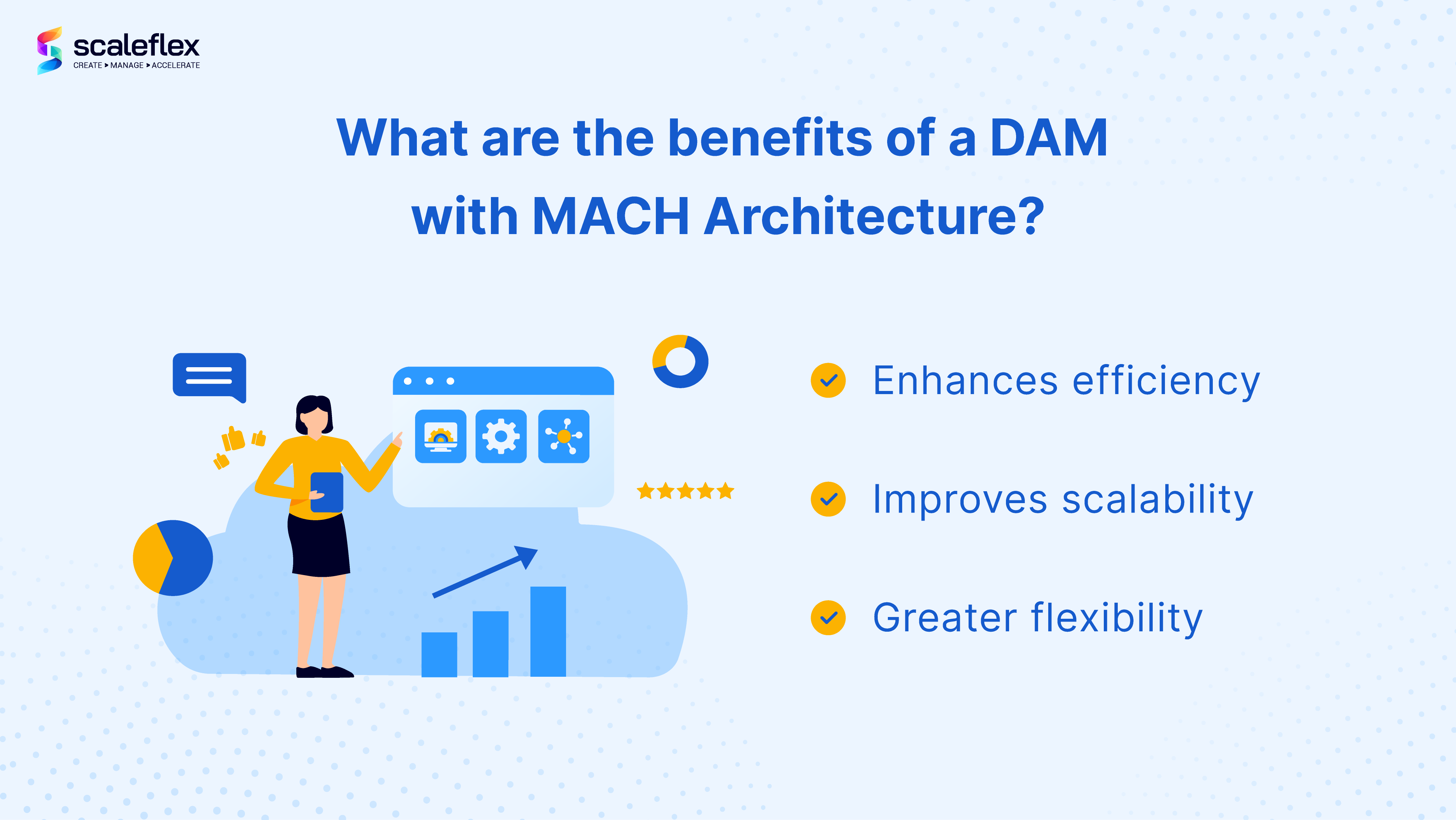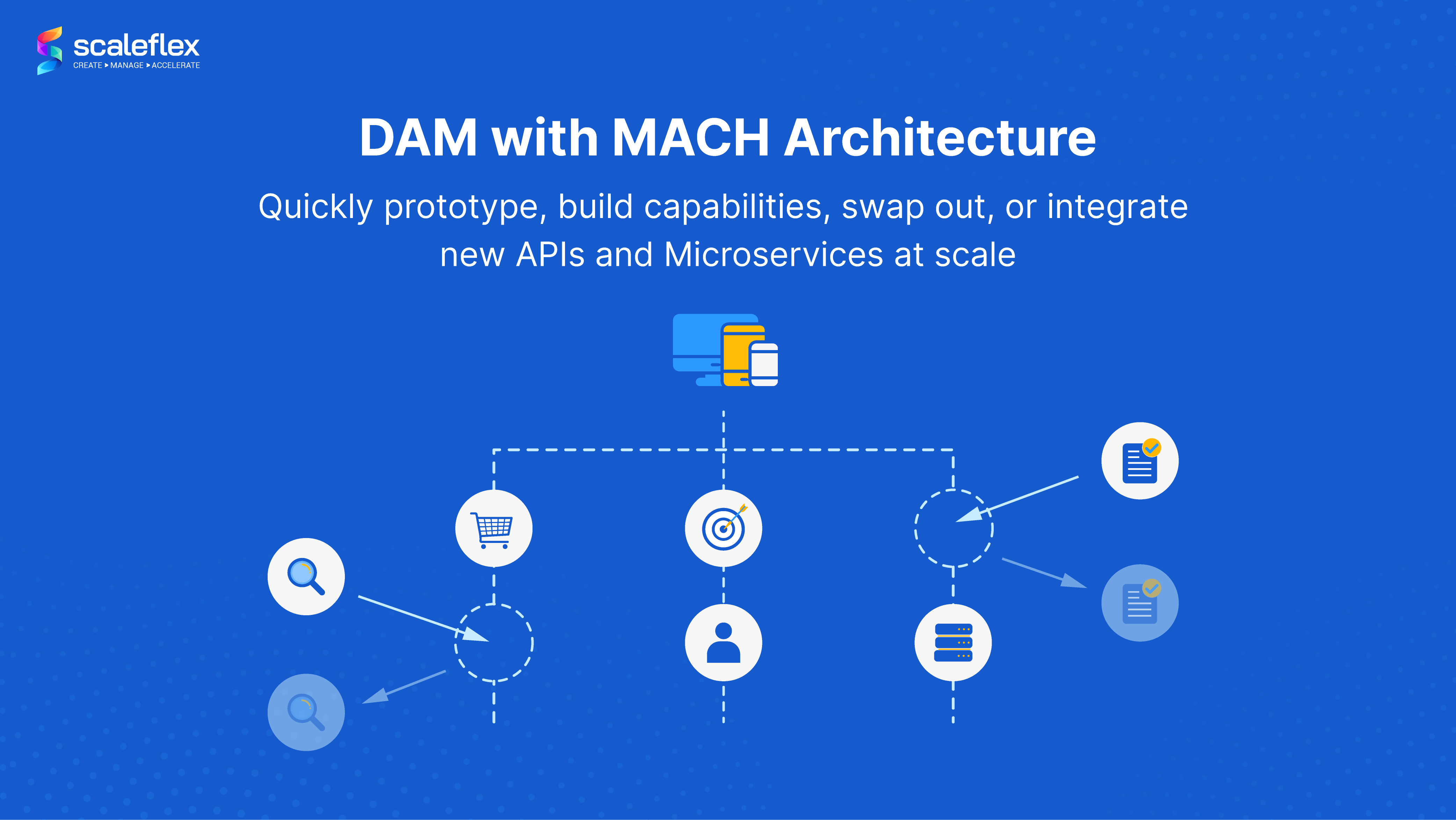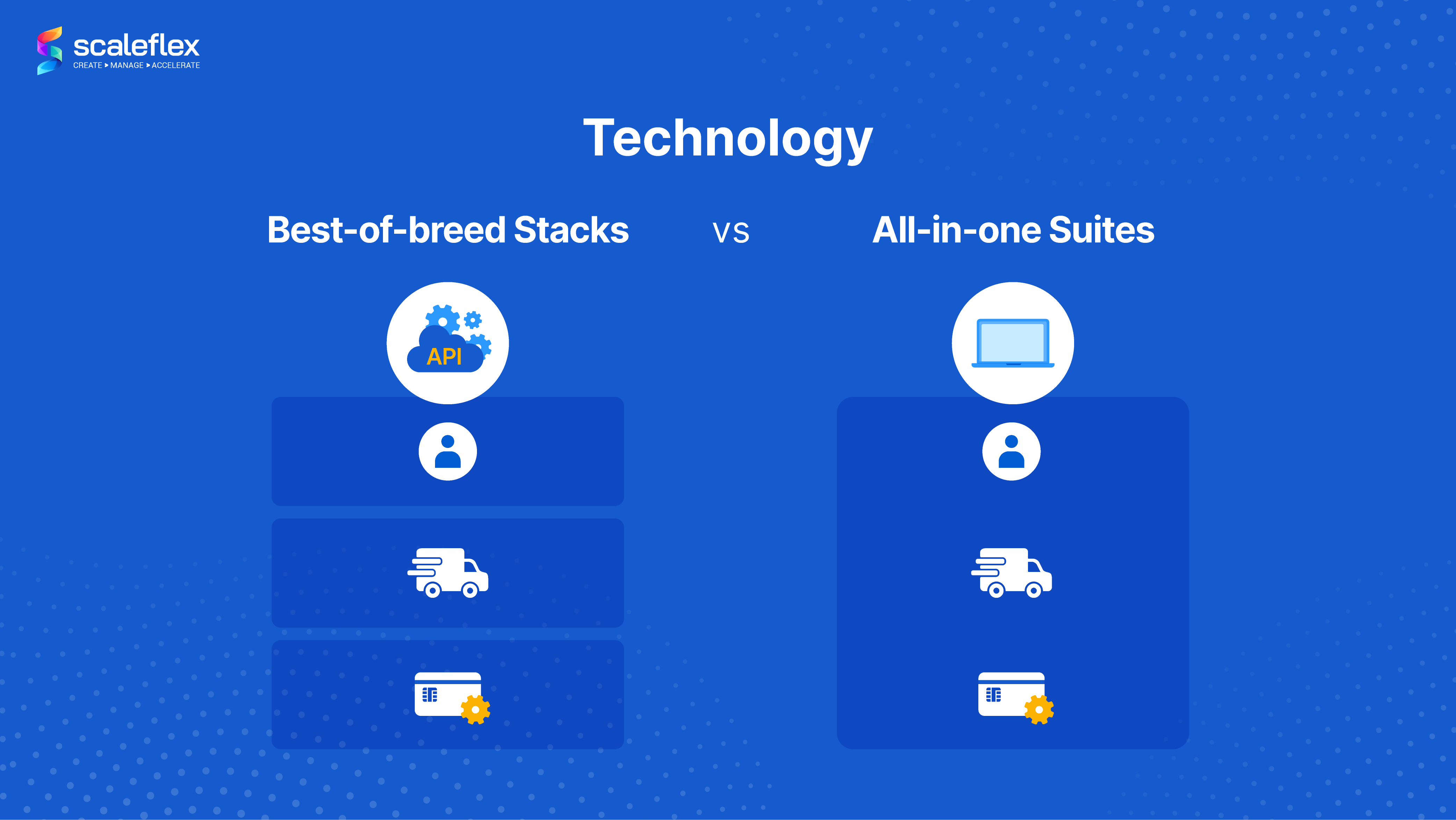Start Your MACH Project and Unlock the Power of Digital Asset Management
Digital assets: images, videos, audio, and documents, play a crucial role in business operations and marketing efforts. Managing these visuals and content is one of the most important aspects for organizations to improve user experience and remain competitive in the digital market.
As the volume and variety of digital assets continue to grow, a business without the proper procedures and systems may lose track of its visual material and spend excessive time managing them effectively.
Digital Asset Management: What is it and Why is it Beneficial?
Digital Asset Management (DAM) is designed to centralize, organize, and streamline the management of digital assets, making it easier for businesses to access and utilize them. The purpose of DAM is to improve the accessibility and usability of digital assets, as well as to ensure their security and preservation for future use.
DAM also helps businesses improve the efficiency and productivity of their workflows by automating many of the manual and tedious tasks associated with managing digital assets. For example, with a DAM, businesses can leverage AI to automate the process of tagging and categorizing assets, reducing the time and effort required to find and access the assets they need.
When companies need to send and share digital assets across teams and to external stakeholders, DAM provides businesses with a range of features and tools to improve the security of their important assets. DAMs provide the ability to track and monitor changes, as well as enforce security policies and permissions for accessing and using assets.
However, not all DAM solutions are created equal.
A MACH-based DAM can help drive agility and speed to market in an ever-growing library of media assets and help companies manage the entire lifecycle of their photographs, videos, documents, and rich media while easily integrating and connecting it with a variety of other MarTech solutions.
Benefits of DAM with MACH Architecture
The core feature of DAM is that it enhances content operations and speeds up time-to-market, which is integral to every part of the content lifecycle. MACH, which stands for Microservices, API-first, Cloud-native, and Headless, is a modern architecture that offers several key benefits when it comes to DAM.

From creation to the eventual distribution of a piece of content, the asset has to pass through many systems, such as CMS, PIM, or ERP platforms. Most of the time, this results in content duplication, which eats up valuable storage space and frequently causes versioning problems. While headless DAMs with solid API integration can aid in resolving these issues and enabling each platform to communicate with one another, a DAM with a MACH design can be more effective.
Enhances efficiency: Time-savings and agile workflows
A MACH-based DAM’s guiding principle is to grant control of the content back to the users rather than removing them from their regular back-office tasks. The API-first approach allows faster and more efficient integration with other systems and platforms, meaning that digital assets can be easily shared and utilized across different teams and departments. Teams no longer have to switch between different systems to access digital assets.
This improves efficiency and allows teams to concentrate entirely on what they do best and provide value to their customers, rather than spending excessive time searching for their visual assets or building integrations and software from scratch.
The cloud-native aspect of a MACH-based DAM provides teams with on-demand access to digital assets from anywhere, and at any time, improving overall productivity.
Improves scalability: Rapid prototyping and feature releases
MACH is defined to be highly scalable, which means it can easily adapt and grow as your business and digital asset needs evolve. You can quickly prototype, build capabilities, expand or contract the functional scope, or integrate a new API from a MACH vendor if a new business need materializes; without affecting the other systems.

With MACH architecture, the time taken to adopt new technology is reduced from months to weeks. When new trends emerge on the market, a MACH DAM enables businesses to keep one step ahead of their competitors and be among the first adopters.
Greater flexibility: Stacks and not suites
With MACH tools and software, businesses have the flexibility to use and integrate different front-end technologies and platforms (CMS, ERP, PIM) to access and utilize their digital assets.
In a 2022 Global Enterprise MACHified research done by the MACH Alliance, over 80% of key decision-makers see MACH as the future of architecture. According to current trends, businesses are abandoning monolithic software to become more flexible, economical, and less dependent on a single vendor.
MACH helps organizations bring together the best-of-breed SaaS vendors for specialized capabilities instead of one vendor to provide all of the business requirements in one platform, and then connect them as a collection of micro-services using the APIs to communicate with one another.

Companies adopting MACH-based DAMs can rely on native integrations created by the vendors themselves, third-party vendors, or custom integrations created using the MACH-compliant or MACH-certified vendor’s APIs. When creating such integrations, headless software excels.
Key Takeaways
Digital Asset Management is essential to any business’s operations and marketing efforts. With its efficiency, scalability, and flexibility, implementing a DAM system with MACH architecture can help your business unlock the full potential of your digital assets and drive your business forward.
Scaleflex’s Filerobot Digital Asset Management is one such DAM certified by the MACH Alliance. With its plethora of plugins, integrations, and strong partnerships with other members of the MACH Alliance, you can create your very own stack of modern technologies that work best for your specific business use case.
Want to learn more about Scaleflex’s DAM and start your MACH project? Connect with our DAM experts for a non-obligatory demo.





